

With the ROG GeForce GTX 1070 Ti Strix Gaming, Asus puts an interpretation of the GP104, which has been slimmed down into the GTX 1070 Ti, on the customer shelf, which actually does almost everything right and nothing wrong. Of course, this is also reflected in the price, but we can... The rather tidy-looking board does not hide any secrets. Power supply, input range, GPU and memory are located exactly where you would have expected them at first glance. THE GPU power supply is a... Important preliminary remark
We had already mentioned it at the beginning that almost exclusively the resulting boost clock rates of each GTX 1070 Ti determine the final performance and thus the so-called GPU lottery and not the manufacturer and model.... Power consumption at different loads
At 177.3 watts, the power consumption in the Torture Loop is even just below the point that Nvidia has set as the Power Target with 180 watts. In the gaming loop, the power consumption of 177.2 watts is almost... Overclocking
The limits of this card are those of the competitor with similar Power Target, which is of course also due to the already mentioned GPU quality. With an adjustable Power Target of 216 watts, the card was approved for... Cooling system and backplate
Of course, the generated waste heat is directly related to the recorded power, for which the cooling solution is responsible for optimum dissipation. This rather conservative cooling system relies on a large lamel... Summary
Well, it's always kind of better, but in this case (almost) everything is right. And this is a good one for anyone who loves a GeForce GTX 1070 Ti. Not too heavy, really quiet and mostly also order...
Important preliminary remarks
We had already mentioned it at the beginning that almost exclusively the resulting boost clock rates of each GTX 1070 Ti determine the final performance and thus the so-called GPU lottery and not the manufacturer and model. At night all cats are grey and the GeForce GTX 1070 Ti is no exception. We benchmarked our entire stock of partner cards, borrowed retail cards and the two GeForce GTX 1070 Ti FE and then added the "best" and "worst" cards to the charts as limits.
It would be unfair and not objective to have one model in the charts in front of another just because the GPU on the existing sample now happens to perform better than that on another model. This will certainly look different with further comparisons, especially since the tolerance range of 1-2 FPS certainly seems realistic. There is therefore no manufacturer in performance that could permanently outperform all other competitors.
Our test object, which is a real retail card, fits into the good midfield of the cards with the stable 1848 to 1860 MHz Boost (depending on the cooling performance of the case).
We also limit ourselves to the WQHD resolution with 2560 x 1440 pixels, because we can see the actual working field of the map here and can also largely exclude all CPU limitations. The maps tested so far are all between or on the respective boundary ranges for the upper and lower limits of the GeForce GTX 1070 contained in the benchmarks, so that one can assume that all individually purchased cards also fall within these ranges. all tolerances that occur.
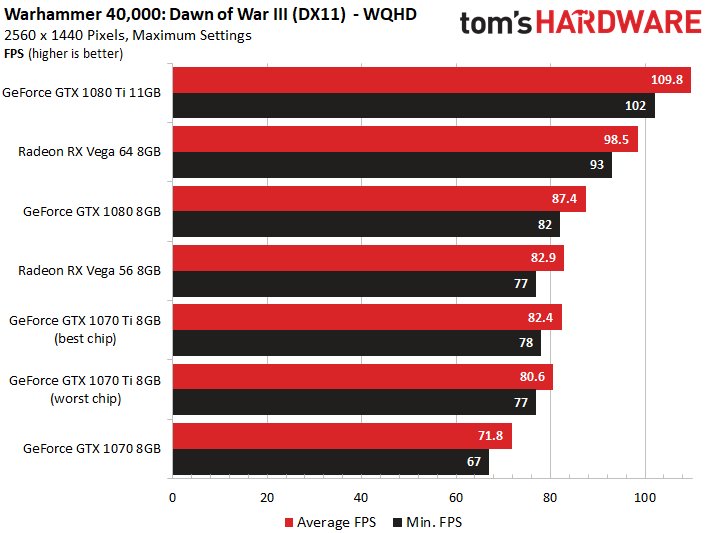
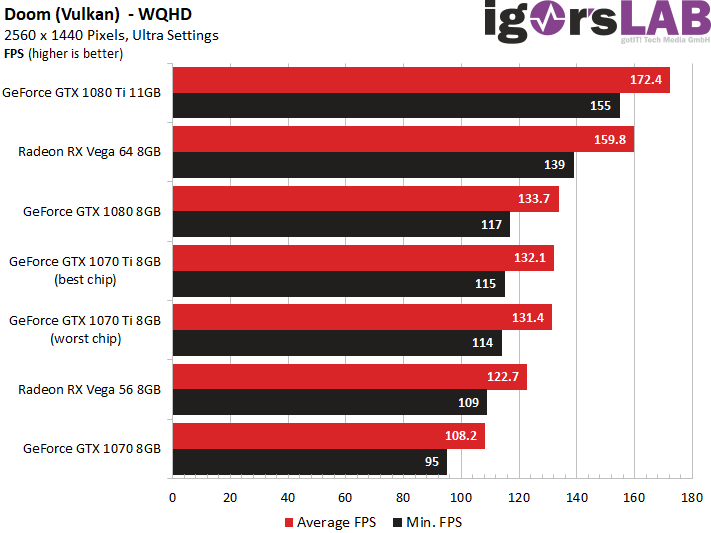
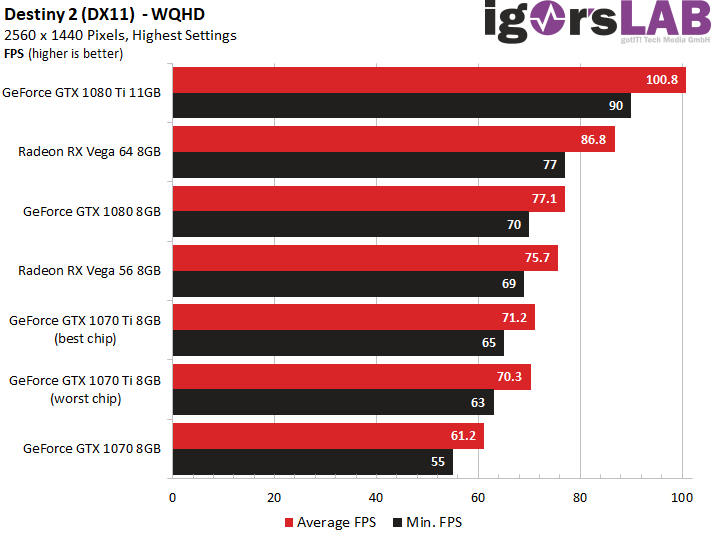
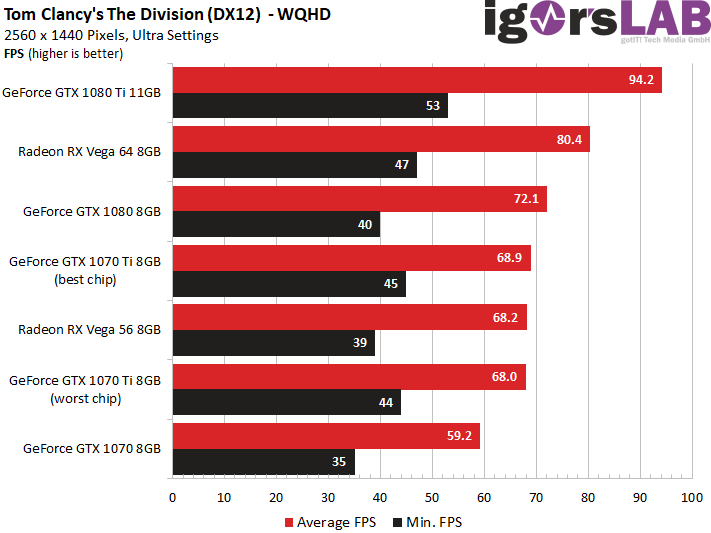
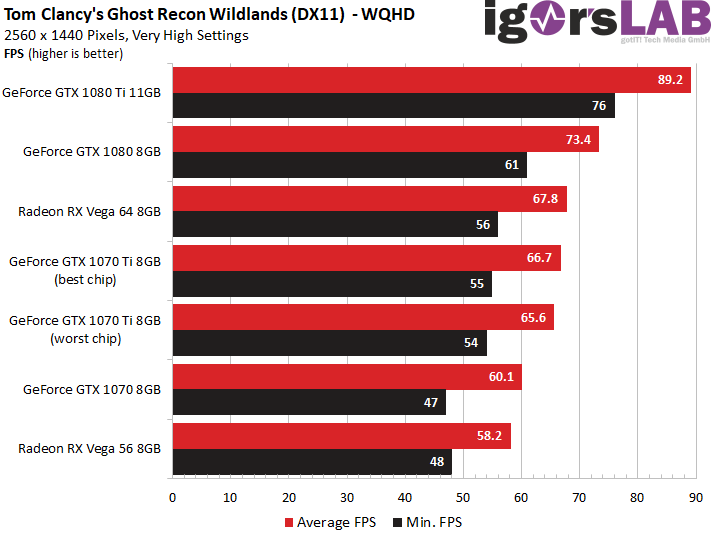
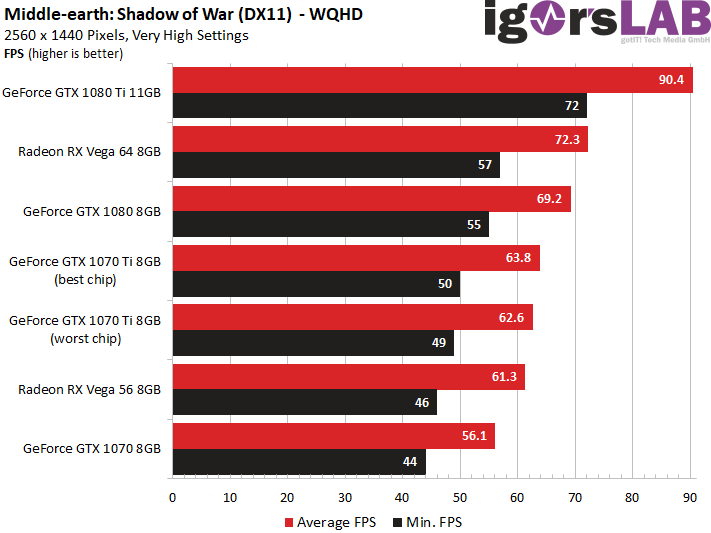
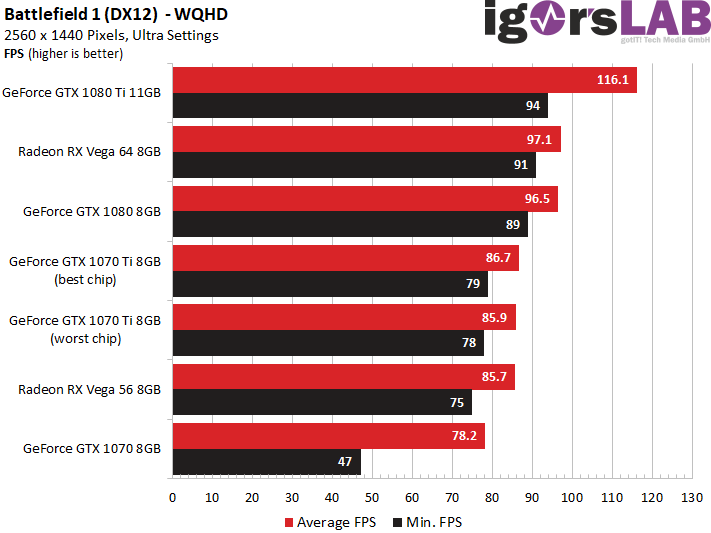
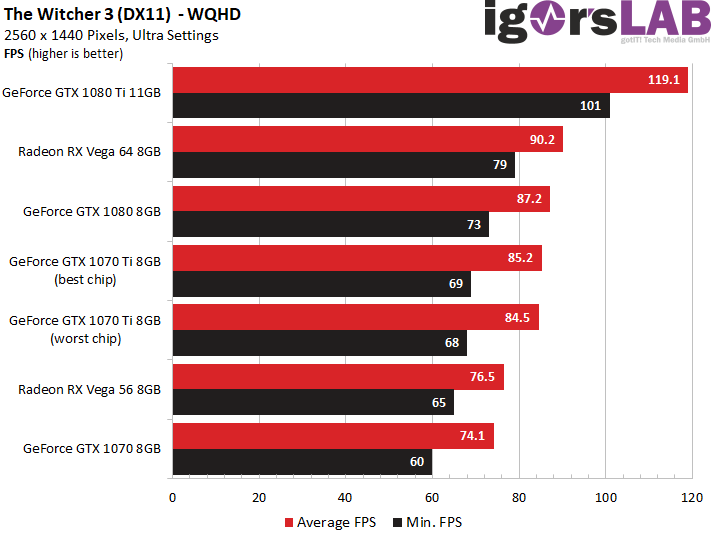









































Kommentieren